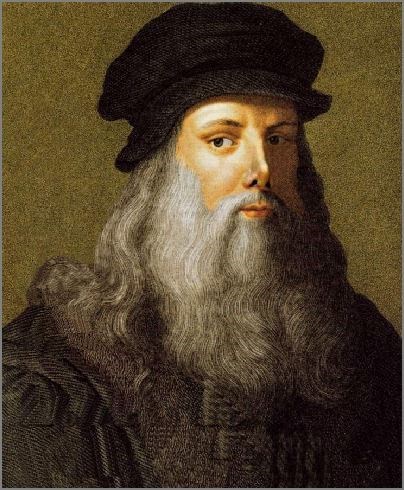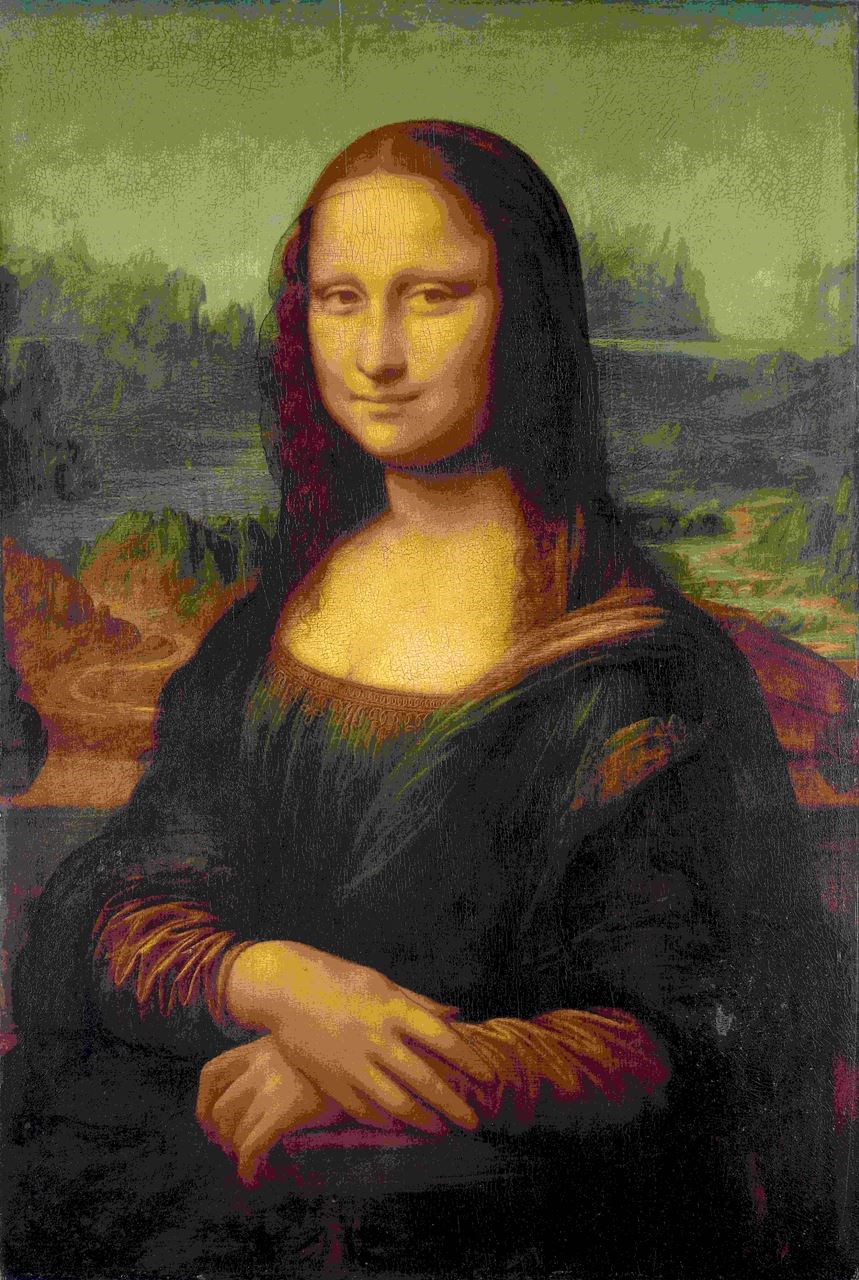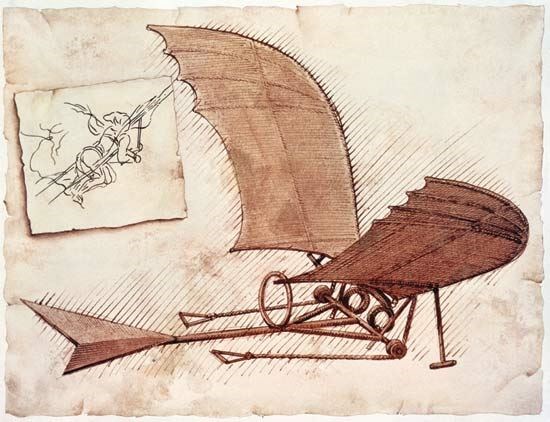 Leonardo da Vinci portraithttps://www.kingsgalleries.com/leonardo-da-vinci/ Ralph Waldo Emerson once stated, “The characteristic of genuine heroism is its persistency. All men have wandering impulses, fits and starts of generosity. But when you have resolved to be great, abide by yourself, and do not weakly try to reconcile yourself with the world. The heroic cannot be the common, nor the common the heroic”(Emerson). A hero stands out because of his or her ability to persevere through physical and mental obstacles. All heroes have distinct ambitions and morals, which when acted upon, provide to them a purpose in society. Heroes are unique because their purpose is not to maintain sameness; rather, it’s to achieve progression. Heroism is seen in the actions of everyday people: staying true to good morals, questioning societal flaws, or finding solutions to issues. However, for a person to hold the title of a hero, they must remain consistent in their actions. Heroes remain humble despite their accomplishments, and continue to improve their work not for biography embellishments, but for the progression in education, welfare, or technology. As a result of a hero’s actions, their dedication, passion, and intellect should reveal themselves. To summarize, a hero remains dedicated to their work, and it is their passion for innovative thinking that evolves society.
Leonardo da Vinci portraithttps://www.kingsgalleries.com/leonardo-da-vinci/ Ralph Waldo Emerson once stated, “The characteristic of genuine heroism is its persistency. All men have wandering impulses, fits and starts of generosity. But when you have resolved to be great, abide by yourself, and do not weakly try to reconcile yourself with the world. The heroic cannot be the common, nor the common the heroic”(Emerson). A hero stands out because of his or her ability to persevere through physical and mental obstacles. All heroes have distinct ambitions and morals, which when acted upon, provide to them a purpose in society. Heroes are unique because their purpose is not to maintain sameness; rather, it’s to achieve progression. Heroism is seen in the actions of everyday people: staying true to good morals, questioning societal flaws, or finding solutions to issues. However, for a person to hold the title of a hero, they must remain consistent in their actions. Heroes remain humble despite their accomplishments, and continue to improve their work not for biography embellishments, but for the progression in education, welfare, or technology. As a result of a hero’s actions, their dedication, passion, and intellect should reveal themselves. To summarize, a hero remains dedicated to their work, and it is their passion for innovative thinking that evolves society.
 Mona Lisa painted by Leonardo da Vincihttps://www.pariscityvision.com/en/paris/museums/louvre-museum/the-mona-lisa-history-and-mystery Notably, Leonardo da Vinci fit the image of a hero centuries ago, and his works remain influential today. Born into a wealthy family in Italy in the year 1452, Leonardo da Vinci grew up illiterate in Latin, a commonly used language for his most studied subject, science. Despite this factor, da Vinci worked to find Italian transcripts of textbooks and learned broken Latin. He spent more of his time observing, researching, and recording ideas than carefully crafting realistic paintings such as the Mona Lisa, one of the most famous pieces in the world. He did so to expand his mind and create the highest quality work. A hero remains dedicated to his or her goal and thinks constructively for the sake of revolutionizing. Leonardo da Vinci is not famous for his artwork alone; as a result of his passion for innovation and vigorous experimenting, he brought his ideas to life, producing concepts so ahead of his time that they continue to influence modern artists and scientists.
Mona Lisa painted by Leonardo da Vincihttps://www.pariscityvision.com/en/paris/museums/louvre-museum/the-mona-lisa-history-and-mystery Notably, Leonardo da Vinci fit the image of a hero centuries ago, and his works remain influential today. Born into a wealthy family in Italy in the year 1452, Leonardo da Vinci grew up illiterate in Latin, a commonly used language for his most studied subject, science. Despite this factor, da Vinci worked to find Italian transcripts of textbooks and learned broken Latin. He spent more of his time observing, researching, and recording ideas than carefully crafting realistic paintings such as the Mona Lisa, one of the most famous pieces in the world. He did so to expand his mind and create the highest quality work. A hero remains dedicated to his or her goal and thinks constructively for the sake of revolutionizing. Leonardo da Vinci is not famous for his artwork alone; as a result of his passion for innovation and vigorous experimenting, he brought his ideas to life, producing concepts so ahead of his time that they continue to influence modern artists and scientists.
 The Glider: a sketch by da Vincihttps://www.leonardodavincisinventions.com/inventions-for-flight/leonardo-da-vincis-glider/ One particular way da Vinci exemplified heroism was through his passion for new ideas; in fact, his ideas were so progressive that modern thinkers look to da Vinci for inspiration. Leonardo da Vinci’s innovation is largely displayed not through his art, but in his journals: Da Vinci’s journals were filled with ideas ahead of his time; he noted flight related crafts such as the helicopter, parachutes, and anemometers centuries before they were created (British Library). Da Vinci specifically constructed thorough plans of flight related tools on paper after questioning a bird’s ability to fly. Compared to the average, stagnant mind of a sixteenth century citizen, da Vinci displayed astounding enlightened thinking that led modern scientists to believe he was a genius who simply lacked the resources to fulfill his potential. As a result, da Vinci has remained a heroic figure throughout centuries because scientists and artists aspire to retain da Vinci’s progressive cognition. It was also said that Leonardo: “...serves as a role model applying the scientific method to every aspect of life...Although he is best known for his dramatic and expressive artwork, Leonardo also conducted dozens of carefully thought out experiments and created futuristic inventions that were groundbreaking for the time” (Museum of Science). The scientific method includes questioning, observing, and gathering data, and Da Vinci was described as having applied each of these to various factors in his life. He then experimented and analyzed information in order to create his “futuristic inventions” or concepts, thereby demonstrating his innovative mind. His inventions, although not fully complete, were found to be the basic structure of devices that were created centuries later. To summarize, Leonardo da Vinci displays innovation through his ideas, but it’s their complexity, given the conditions of the Renaissance era, that portrays Leonardo da Vinci as a heroic figure that modern thinkers look to for creative inspiration.
The Glider: a sketch by da Vincihttps://www.leonardodavincisinventions.com/inventions-for-flight/leonardo-da-vincis-glider/ One particular way da Vinci exemplified heroism was through his passion for new ideas; in fact, his ideas were so progressive that modern thinkers look to da Vinci for inspiration. Leonardo da Vinci’s innovation is largely displayed not through his art, but in his journals: Da Vinci’s journals were filled with ideas ahead of his time; he noted flight related crafts such as the helicopter, parachutes, and anemometers centuries before they were created (British Library). Da Vinci specifically constructed thorough plans of flight related tools on paper after questioning a bird’s ability to fly. Compared to the average, stagnant mind of a sixteenth century citizen, da Vinci displayed astounding enlightened thinking that led modern scientists to believe he was a genius who simply lacked the resources to fulfill his potential. As a result, da Vinci has remained a heroic figure throughout centuries because scientists and artists aspire to retain da Vinci’s progressive cognition. It was also said that Leonardo: “...serves as a role model applying the scientific method to every aspect of life...Although he is best known for his dramatic and expressive artwork, Leonardo also conducted dozens of carefully thought out experiments and created futuristic inventions that were groundbreaking for the time” (Museum of Science). The scientific method includes questioning, observing, and gathering data, and Da Vinci was described as having applied each of these to various factors in his life. He then experimented and analyzed information in order to create his “futuristic inventions” or concepts, thereby demonstrating his innovative mind. His inventions, although not fully complete, were found to be the basic structure of devices that were created centuries later. To summarize, Leonardo da Vinci displays innovation through his ideas, but it’s their complexity, given the conditions of the Renaissance era, that portrays Leonardo da Vinci as a heroic figure that modern thinkers look to for creative inspiration.
 Vitruvian Man: a sketch by da Vincihttps://leonardodavinci.stanford.edu/submissions/clabaugh/history/leonardo.html To add on, Leonardo da Vinci remained dedicated to his work despite his obstacles that he faced that still exist today: harsh conditions, lack of information and opposing societal factors. His overcoming of relatable obstacles is what inspires modern society to work with his work ethic. Da Vinci was written to have: “...learned to dissect the cadavers of criminals under inhuman, disgusting conditions...because he wanted [to examine and] to draw the different deflections and reflections of limbs and their dependence upon the nerves and the joints. This is why he paid attention to the forms of even very small organs, capillaries and hidden parts of the skeleton.”(MoS). In order to accurately portray the human body, da Vinci worked in unhealthy conditions to dissect cadavers to illustrate even the smallest details within a body. Da Vinci sacrifices his own well-being for the sake of knowledge, which exemplifies his strong dedication to being successful in his career. His hard work resulted in discoveries about the interior of a human body in terms of organs, blood vessels and bone structure, but also of the exterior such as proportions and fine details that were insignificant to the average Renaissance artist. His in-depth illustrations progressed society’s knowledge of human anatomy. To add on, Leonardo’s persistence made him unique from other artists because: “For Leonardo there could be no art without science; he insisted that the artist should possess knowledge of nature or else he would be a mere draughtsman. His endeavor to create a codified body of scientific knowledge was Herculean, his accomplishments astounding” (Kemp). Da Vinci always associated art with science, thus he worked hard to observe and learn. He believed the use of accurate proportions and details created art that was both expressive and realistic. This trait was described as Herculean, meaning his work required much strength and effort. Most of Da Vinci’s career was spent observing--demonstrating his patience and commitment to accuracy in his work. To conclude, Da Vinci exemplified dedication to his career through his overcoming of obstacles and emphasis on complex details that were often considered irrelevant. His dedication to advancing realism in art and the scientific knowledge of the body in the Renaissance era supports the idea that Leonardo da Vinci’s qualities allowed for influential discoveries. Also, the societal effects of his achievements and his overcoming of obstacles inspire people to work with the same good ethics as da Vinci.
Vitruvian Man: a sketch by da Vincihttps://leonardodavinci.stanford.edu/submissions/clabaugh/history/leonardo.html To add on, Leonardo da Vinci remained dedicated to his work despite his obstacles that he faced that still exist today: harsh conditions, lack of information and opposing societal factors. His overcoming of relatable obstacles is what inspires modern society to work with his work ethic. Da Vinci was written to have: “...learned to dissect the cadavers of criminals under inhuman, disgusting conditions...because he wanted [to examine and] to draw the different deflections and reflections of limbs and their dependence upon the nerves and the joints. This is why he paid attention to the forms of even very small organs, capillaries and hidden parts of the skeleton.”(MoS). In order to accurately portray the human body, da Vinci worked in unhealthy conditions to dissect cadavers to illustrate even the smallest details within a body. Da Vinci sacrifices his own well-being for the sake of knowledge, which exemplifies his strong dedication to being successful in his career. His hard work resulted in discoveries about the interior of a human body in terms of organs, blood vessels and bone structure, but also of the exterior such as proportions and fine details that were insignificant to the average Renaissance artist. His in-depth illustrations progressed society’s knowledge of human anatomy. To add on, Leonardo’s persistence made him unique from other artists because: “For Leonardo there could be no art without science; he insisted that the artist should possess knowledge of nature or else he would be a mere draughtsman. His endeavor to create a codified body of scientific knowledge was Herculean, his accomplishments astounding” (Kemp). Da Vinci always associated art with science, thus he worked hard to observe and learn. He believed the use of accurate proportions and details created art that was both expressive and realistic. This trait was described as Herculean, meaning his work required much strength and effort. Most of Da Vinci’s career was spent observing--demonstrating his patience and commitment to accuracy in his work. To conclude, Da Vinci exemplified dedication to his career through his overcoming of obstacles and emphasis on complex details that were often considered irrelevant. His dedication to advancing realism in art and the scientific knowledge of the body in the Renaissance era supports the idea that Leonardo da Vinci’s qualities allowed for influential discoveries. Also, the societal effects of his achievements and his overcoming of obstacles inspire people to work with the same good ethics as da Vinci.
Leonardo da Vinci once said, “I have been impressed with the urgency of doing. Knowing is not enough; we must apply. Being willing is not enough; we must do” (da Vinci), referring to his achievements of highly influential concepts as a result applying his traits of innovation and dedication. In doing so, da Vinci demonstrates the character of a hero. His passion for knowledge and observing allowed for accurate artwork and futuristic inventions as well as his unique creativity within the Renaissance era. In an article about da Vinci’s life, he was described as “...a protoscientist in the modern sense of what constitutes science, bringing to his investigation of the natural world not only an extraordinary artistic imagination, which led him to innumerable original discoveries, but a unique and idiosyncratic intellectual position that helped him to circumvent the mental blocks of his contemporaries” (Ackerman). Da Vinci is not inspirational for just his artwork; instead, he is inspirational because he acted upon his outside-of-the-box thinking to progress the Renaissance society. His mind was so ingenious and his work ethic was so strong that modern thinkers view da Vinci as a role model. As a lover of art, I was already fascinated by the works of da Vinci. However, learning about him has given me the ability to see beyond his art; I see his heroic traits: passion, vigor and innovation. His ingenuity leaves me in awe, and I am left inspired to work as da Vinci did to leave on impact on society. To conclude, Leonardo da Vinci did not believe in having a life handed to him the way that it is; he did not linger, nor pointlessly think, nor allow society to remain static. Da Vinci was a hero five centuries ago, and will continue to hold his title for years to come as his accomplishments and traits continue to inspire people to work with the same good ethics and creativity as he had in order to achieve success.
Works Cited
Ackerman, James S. "Leonardo da Vinci: Art in Science." Daedalus, vol. 127, no. 1, 1998, Student Resources in Context, https://link.galegroup.com/apps/doc/A254405267/SUIC?u=powa9245&xid=cfd71878. Accessed 8 Jan. 2018.
“A Quote by Ralph Waldo Emerson.” Quote by Ralph Waldo Emerson: "The Characteristic of Genuine Heroism Is Its Pe...", www.goodreads.com/quotes/49203-the-characteristic-of-genuine-heroism-is-its-persistency-all-men.
“Da Vinci – The Genius”, Museum of Science, Boston. www.mos.org/leonardo/. Accessed 8 Jan. 2018
"Leonardo da Vinci." Authors and Artists for Young Adults, vol. 40, Gale, 2001. Biography in Context, https://link.galegroup.com/apps/doc/K1603000777/BIC1?u=powa9245&xid=1869383d. Accessed 8 Jan. 2018.
“Leonardo Da Vinci Quotes.” BrainyQuote, Xplore, www.brainyquote.com/quotes/leonardo_da_vinci_120052.
Turning the Pages™ - British Library,
www.bl.uk/turning-the-pages/?id=cb4c06b9-02f4-49af-80ce-540836464a46&type=book. Accessed 8 Jan. 2018
Page created on 2/27/2018 4:49:12 AM
Last edited 2/28/2018 5:57:05 PM
